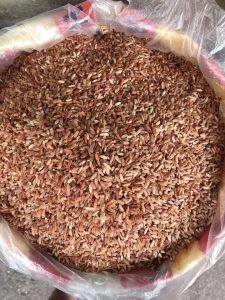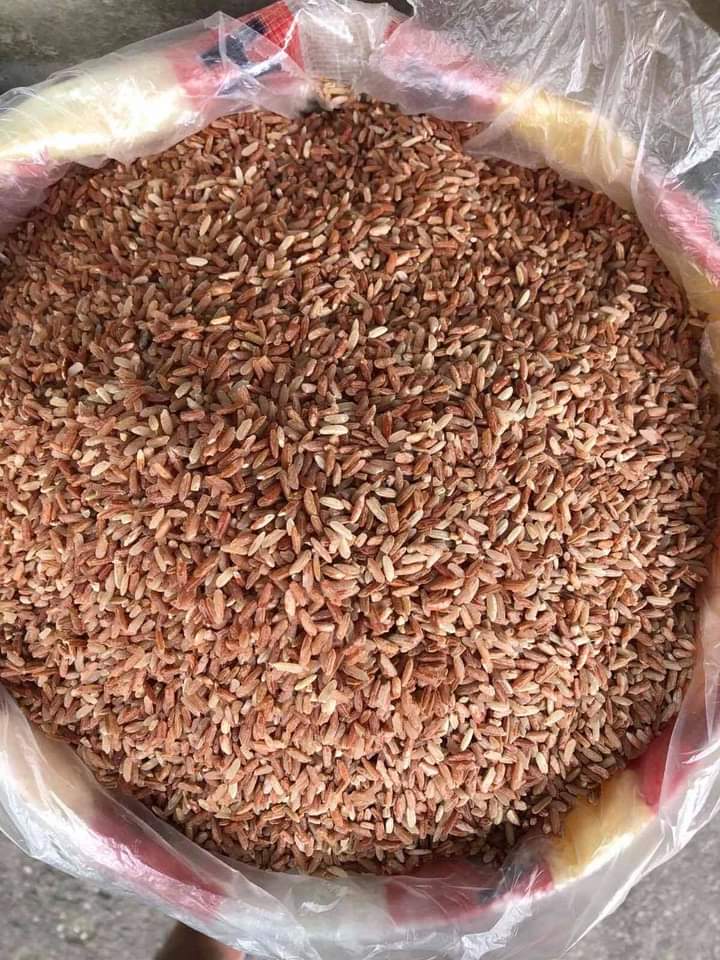Red rice benefits and side effects
The exact topic of this article first appeared on www.nimedhealth.com.ng…
Also known as Asian rice, red rice is cultivated in different parts of the world. It is a whole grain meal with a unique red colour. Red rice consists of several nutrients, and includes the bran, endosperm and germ layer.
Red rice
From the name, you can tell red rice was coined from its colour. But, apart from its colour, there are other distinguishing characteristics of the red rice.
Red rice may be fully or partially covered with red husk. The colour of red rice is because of the presence of a compound known as “anthocyanin”. This particular compound is responsible for many of the benefits accompanied with this variety of rice.
Red rice has a lot of medicinal properties. It is nutrient-packed and offers a lot of health benefits, reason why it is consumed unshelled. Re rice is low in fat and has a high amount of fiber. It also contains Vitamin B6, C, A, potassium, magnesium, calcium, iron as well as powerful antioxidant activities.
Benefits of red rice
Here are some of the benefits of red rice:
Boost immunity: Red rice contains antioxidants that can help strengthen your immune system. Additionally, the presence of magnesium and selenium in this grain can help prevent and fight against several infections and diseases.
Decrease inflammation: Red rice contains anti-inflammatory properties that help reduce inflammation.
Protect against cancer: Red rice is rich in antioxidants and flavonoids that help fight free radicals in the body. It also reduces the risk of certain types of cancer.
Control diabetes: Red rice can help in the management of diabetes. It helps in the control of blood sugar levels. This is because of its low glycemic index score, which means that energy or sugars are absorbed into the bloodstream at a slower rate. Thus, wouldn’t cause a spike in blood glucose levels.

Improves digestive health: Red rice is a loaded in nutrients. One of which is fiber that helps facilitate digestion and prevent digestive issues like constipation and bloating. Furthermore, consumption of red rice allows for free bowel movement.
Prevents asthma: Red rice is a rich source of magnesium, and thus can assist with oxygen circulation. An improved circulation of oxygen in the body may help prevent asthma and other respiratory conditions.
Aids weight loss: Red rice is a weight-loss friendly food. This is because it has its fiber and bran layer retained. Hence, consumption can make you feel satisfied and keep you fuller for a longer time. This helps curb appetite and overeating including (binge eating and junks). It is a good meal add for the obese.
Reduces risk of heart diseases: Regular consumption of red rice has the potential to lower your cholesterol levels. Plus, get rid of bad cholesterol. A decrease in cholesterol level will help reduce your risk of cardiovascular diseases like stroke and heart attack.
Strengthens bone health/development: Since red rice contain magnesium and calcium in sufficient amounts, it can help improve bone-density, and prevent bone diseases like osteoporosis and arthritis as well as other bone-related conditions.
Improves Skin health: The antioxidant- anthocyanin in red rice can help reduce aging process and protect the skin against damage. The rich content of iron and vitamin B6 can assist with red blood cell formation, leaving the skin radiant and glowing.
Promote hair growth: The use of rice water these days has been recommended by hair and beauty experts for hair growth and strength. Regular use of red rice water prevents hair breakage and loss. It can also keep your hair lustrous and shiny.
Side effects of red rice
Despite the many potential benefits linked to red rice, some reported side effects include gastrointestinal issues like:
Gassy feeling
Abdominal discomfort or stomach pain
Bloating
Indigestion
Other rare side effects of red rice include:
Heartburn
Muscle aches
Head ache
Weakness
Having negative effects to this meal is most times rare, and even when it occurs are usually mild. But in exceptional cases, you should seek medical attention if you notice any severe allergic reactions. Symptoms of allergic reactions include: rash (it occurs in the face, throat and tongue), itching, swelling dizziness and difficulty in breathing.
Conclusion
Although, red rice is an easy add to diets regimen, and contains a lot of potential benefits; it is important you don’t consume in excess amounts.






















Hey!Nice article Red rice very useful to skin.High in iron and vitamin 6.